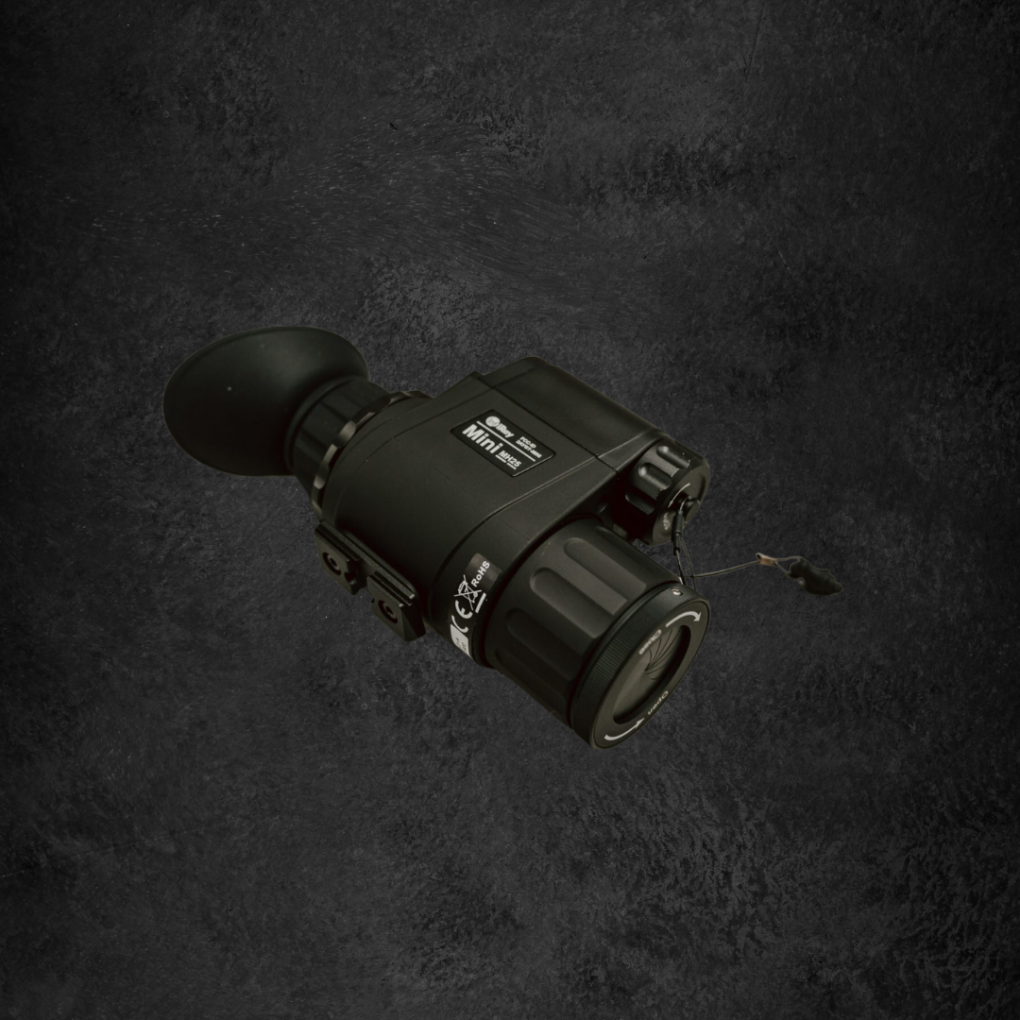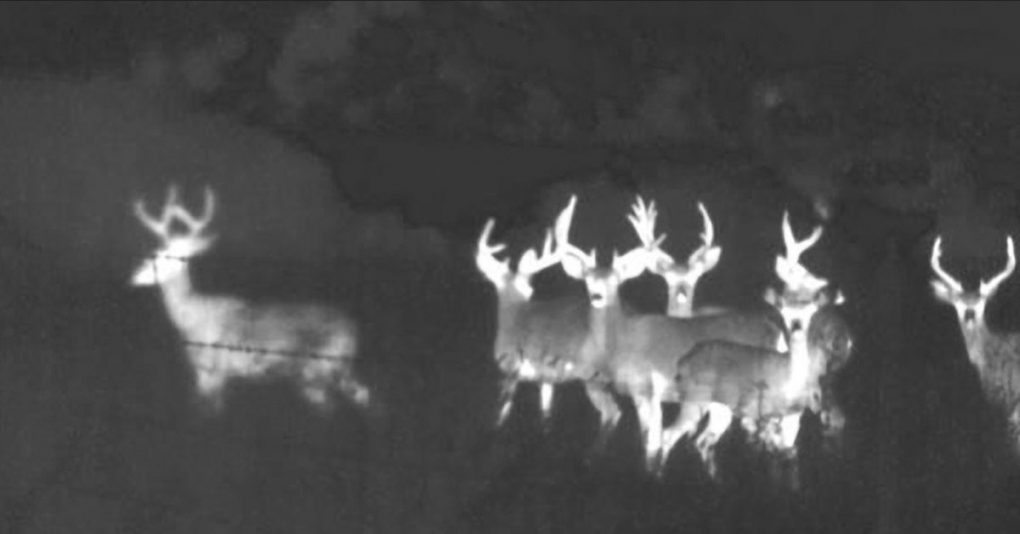Wildlife species are an integral part of their ecosystems, but monitoring nocturnal species can be difficult due to their activity during the night.
Night vision devices offer the ability to observe nocturnal species in their natural environment without disturbances, allowing for more effective research and conservation efforts.
This article will discuss the types of night vision devices used in wildlife research, the advantages of using night vision technology, and the challenges and limitations of its use, such as maintaining and calibrating night vision devices, choosing the best night vision device, and using night vision devices safely.
→ Discover more from articles by Steele Industries!
– WHAT YOU NEED TO KNOW ABOUT THERMAL IMAGING
– HUNTING WITH A NIGHT VISION DEVICE: YOUR QUESTIONS, ANSWERED
– And more, visit our blog!
⇒ Contact us:
-Call us at (800) 674-7302
-E-mail: sales@steeleindinc.com
–Facebook/ steeleindustriesinc
–Instagram/steeleindustriesinc
The Importance of Monitoring Nocturnal Species
By taking a closer look at the behavior of nocturnal animals, we can better understand the crucial role they play in our world and the importance of protecting them.
Nocturnal animals are a vital part of the balance of nature, providing food sources, dispersing seeds, and controlling insect populations. Many species, such as owls and bats, are essential components of the food chain, preying on species such as mice and insects that can be a nuisance to humans. In addition, the role of nocturnal animals in pollination and seed dispersal is important for the maintenance of healthy habitats.
The importance of protecting nocturnal species is further highlighted by the fact that they are increasingly susceptible to endangerment due to human activities such as habitat destruction, climate change, and pollution. Without proper monitoring, it is difficult to assess the impact of these activities on nocturnal species and to design effective conservation plans.
Therefore, the use of night vision devices for wildlife research and conservation is a crucial tool in understanding and preserving the nocturnal species that have such an important role in our environments.
Types of Night Vision Devices Used in Wildlife Research
Night vision devices are essential tools for wildlife research and conservation.
Image Intensifier Night Vision Devices, Infrared (IR) Illuminator-Assisted Devices, Thermal Imaging Devices, and Digital Night Vision Systems are the main types of devices used in this research.
Although all four types of devices have their own distinct advantages, they can all be used to monitor nocturnal species more effectively.
Image Intensifier Night Vision Devices
Image Intensifier technology provides a powerful tool to aid in the observation of nocturnal organisms. This technology utilizes an image intensifier tube that amplifies electromagnetic radiation, such as visible light, and converts it into an electrical signal, which is then converted into a visible image. The image intensifier tube is then connected to a display device, such as a monitor or a recording device, allowing the user to observe the nocturnal species in greater detail.
Image Intensifier technology is particularly useful for monitoring nocturnal species due to its ability to amplify light to levels that would be undetectable to the human eye. This technology also allows for observation of animals at longer distances, reducing the chance of disturbing the species being monitored. Image Intensifier devices are also capable of providing higher resolution images than traditional cameras, allowing for greater detail when recording images.
Additionally, they are more cost-effective than other types of night vision devices, making them an ideal choice for wildlife research and conservation efforts.
Infrared (IR) Illuminator-Assisted Devices
Through the use of an infrared illuminator, image intensifier devices can further extend their ability to observe nocturnal creatures, allowing us to gain a deeper understanding of the natural world.
An infrared illuminator is a type of light source that emits light at a specific wavelength that is invisible to the human eye. These devices have been used in night vision technology for many decades, but recent advances in image intensifier technology have made them a viable option for wildlife research and conservation.
The use of an infrared illuminator can provide a significant advantage in viewing nocturnal animals, as these devices can provide illumination without disturbing the natural environment. In addition, the use of an infrared illuminator eliminates the need to use a visible light source, which could possibly disrupt the behavior of nocturnal species.
Furthermore, the use of an infrared illuminator allows researchers to observe animals that would otherwise be difficult to observe in the dark, such as those that inhabit caves or other locations that are difficult to access. Overall, the use of an infrared illuminator can help researchers to observe nocturnal animals more effectively, allowing them to gain a better understanding of the species’ behavior and ecology.
Thermal Imaging Devices
Thermal imaging technology is a powerful tool for gathering data and monitoring nocturnal species, allowing for detailed analysis of the behavior and ecology of these organisms.
Thermal imaging devices employ a special sensor that is designed to detect the thermal radiation emitted from an object. This allows for the creation of an image based on the temperature of the object, which can then be used to observe the behavior of the species and their environment.
Additionally, these devices are able to capture detailed images in low-light settings without the need for an IR illuminator, making it a more efficient tool for wildlife research and conservation.
Some benefits of using thermal imaging devices for wildlife research and conservation include:
- The ability to identify individual animals without the use of tags or collars
- A more efficient way to monitor nocturnal species without the need for an IR illuminator
- A more detailed analysis of the behavior and ecology of species
- An improved ability to distinguish between species in the same environment
Digital Night Vision Systems
Digital night vision systems provide a powerful resource for gathering data and observing nocturnal organisms, allowing for a thorough examination of their behavior and ecology.
These systems use a combination of infrared illumination, a light intensifier, and an imaging device to capture images in low-light environments. The infrared light illuminates the environment and the light intensifier amplifies the small amount of light available.
This combination of light and amplification allows the users to observe organisms and their behavior in near-complete darkness.
Digital night vision systems offer a number of advantages over traditional night vision systems.
Unlike traditional systems, digital night vision systems offer image resolution that is superior in clarity and contrast, which is especially useful for observing the behavior of nocturnal species.
Digital night vision systems also provide a wider field of view, allowing for more detailed observations and increased accuracy when tracking the movement of the species being studied.
Finally, these systems are more portable than traditional ones, making them more convenient and easier to use in a variety of environments.
Advantages of Using Night Vision Technology for Studying Nocturnal Species
The use of night vision technology for studying nocturnal species offers a range of potential advantages, including improved detection and observation of nocturnal species, enhanced data collection and research accuracy, and reduced disturbance to wildlife.
Improved detection and observation of nocturnal species is made possible due to the enhanced visibility of the animals in low light or darkness, allowing them to be spotted more easily.
The use of night vision technology also allows researchers to collect more accurate data on the behavior of nocturnal species, as they can be observed for longer periods of time without disturbing them.
Finally, the use of night vision equipment can reduce the disturbance to wildlife, as it allows researchers to observe the animals without necessarily needing to be close to them.
Improved Detection and Observation of Nocturnal Species
Advances in technology have enabled a better detection and observation of organisms that are active at night. Night vision devices have allowed researchers to observe nocturnal species and their behaviors in much greater detail than before. These devices provide a number of benefits, such as:
- Enhanced ability to observe nocturnal species in their natural habitat
- Improved detection of nocturnal species in low light conditions
- Greater accuracy in determining the size, location, and behaviors of nocturnal species
- Reduced disturbance to nocturnal species, as researchers can study them without being physically present in their habitat
Overall, night vision devices have revolutionized the way researchers study nocturnal species. They can now observe these species in greater detail, with reduced disturbance to the animals. As a result, researchers can gain more accurate and detailed data about the behavior of nocturnal species, which can be used to inform conservation efforts.
Enhanced Data Collection and Research Accuracy
Through the use of sophisticated night vision technology, data collection and research accuracy regarding nocturnal species has been greatly enhanced. Utilizing such devices enables researchers to detect and observe these animals with greater accuracy, and from greater distances, than ever before.
Night vision devices allow for detailed observations of nocturnal species in their natural habitats, providing a wealth of data that would otherwise be difficult or impossible to obtain. Additionally, such devices provide researchers with the ability to record data more accurately and efficiently. This accuracy helps to ensure that the data collected is more reliable and better suited for research and conservation purposes.
Furthermore, the use of night vision devices allows researchers to observe nocturnal species with minimal disturbance, minimizing the potential impact on the animals’ behavior. Through the use of these devices, researchers are able to obtain more precise, detailed information than ever before about nocturnal species, resulting in a better understanding of their behavior and ecology.
Reduced Disturbance to Wildlife
Utilizing sophisticated technology for data collection and research has allowed for a reduction in disturbance to wildlife, leading to a better understanding of their behavior and ecology.
Night vision devices, such as thermal imaging cameras and infrared cameras, are a great example of technology that is being used to observe nocturnal species without disturbing them. These devices offer the opportunity for researchers to observe wildlife in their natural habitat while remaining undetected. This is beneficial since it allows animals to behave naturally, without the presence of humans affecting their behavior. Additionally, these devices do not require any physical contact with the animals, reducing the risk of additional stress or disturbance that could be caused by more invasive methods.
The use of night vision devices has also increased the accuracy of research results. By allowing researchers to accurately observe wildlife without causing any disruption, the data collected is more reliable and trustworthy. This provides a higher quality of data that can be used to study the behavior and ecology of nocturnal species, resulting in a better understanding of the species and their habitats.
Furthermore, if the data is collected without interference, it can be used to better understand how different environmental factors and human activities may be affecting the species. This information can then be used by conservationists to make informed decisions about the conservation of nocturnal species.
Challenges and Limitations of Using Night Vision Devices in Wildlife Research
Night vision devices offer a valuable tool for wildlife researchers and conservationists to more effectively monitor nocturnal species, however there are several challenges and limitations that must be considered.
Image quality and resolution limitations, environmental conditions impacting night vision performance, and equipment cost and maintenance considerations are some of the issues that must be taken into account.
It is important to be aware of these potential limitations when using night vision devices for wildlife research and conservation.
Image Quality and Resolution Limitations
Image quality and resolution are important considerations when exploring the potential of night-time observation.
Night vision devices rely on image intensification and thermal imaging to detect and record images in low light conditions.
However, the resolution of these images is often limited due to the technology used.
Image intensification relies on an intensifier tube to amplify the available light, which can result in a grainy image with low resolution.
Thermal imaging also has limited resolution, as the thermal sensors detect the heat emitted by an animal, which can be affected by the environment.
Both of these technologies can provide useful results for research, however, the image quality and resolution may not be sufficient for some applications.
Additionally, the range of the device can also be affected by environmental conditions, such as fog or rain, which can reduce the usability of the device.
Therefore, it is important to consider the limitations of the device before using it in a research setting.
Impact of Environmental Conditions on Night Vision Performance
Environmental conditions such as fog or rain can drastically reduce the performance of night vision devices, making it difficult to accurately observe wildlife at night.
The impact of environmental conditions on night vision performance can be summarized as follows:
- Poor visibility due to fog or rain can reduce the range of the device as well as limit the detail that can be seen.
- High temperatures can reduce the performance of the device, especially in extreme cases.
- High humidity can lead to fogging of the optics, reducing the clarity of the image and limiting the user’s ability to observe wildlife in detail.
These environmental conditions can severely limit the performance of night vision devices, making it difficult to observe nocturnal species and their behavior.
Thus, it is important for researchers and conservationists to be aware of the impact of environmental conditions on night vision performance in order to ensure the accuracy of their observations.
Equipment Cost and Maintenance Considerations
In order to ensure the accuracy of night vision observations, it is important to consider the cost and maintenance of the equipment used.
Night vision devices used for wildlife research and conservation differ in cost depending on their specifications, such as magnification, resolution, and field of view. Digital night vision devices typically range from $500 to over $4,000, while analog night vision devices may cost slightly less. Additionally, night vision devices may require specific accessories, which can add to the cost.
Furthermore, the cost of the device must be weighed against its maintenance needs. For example, digital night vision devices may require the use of an external power source, such as a battery, which must be replaced periodically. Analog night vision devices may be more affordable in terms of replacement parts, but may require more maintenance as a result. Therefore, when selecting a night vision device, it is important to consider the cost of the device and potential maintenance needs.
Some Thermal Devices Offered by Steele Industries
INFIRAY JERRY CE5 CLIP-ON-THERMAL
Description:
The JerryC family of thermal fusion optics offers enhanced thermal detection capability (Fusion) for your night vision device. These devices are designed to improve detection abilities beyond what traditional image intensifier systems can achieve. The units incorporate a 12-micron 640×512 thermal sensor, utilizing an injection arm that projects a 30.5-degree image into the objective lens of your night vision device.
The current version of JerryC thermal devices uses software that enables image alignment. It features three visual modes: Outline, Patrol, and Full Thermal.
- The latest 12μm HD infrared module is more robust, lightweight, and compact.
- Ultra-low load enables quick installation.
- The quick-release interface allows for seamless infrared fusion functionality.
- Fusion display and threat identification capabilities.
- Multiple application modes facilitate the search and display of hot targets, helping users maintain the upper hand.
A common concern with clip-on thermal imagers is the added weight to host systems and limited battery life. The Jerry CE5 addresses these issues by removing the onboard battery compartment and shifting the power source to a larger external battery pack (included). This reduces the weight on the front of the helmet and provides over 8 hours of continuous battery life.
The Jerry CE5 package includes an external battery pack that accepts 2x 18650 flat-top batteries, a power cable, a battery pack mount, and a custom hard case.
IRAY MH25 THERMAL MONOCULAR 640 12 MICRON

Description:
The IRay Mini MH25 is the most compact and versatile 12-micron thermal imaging monocular available. It can function as a handheld device or be mounted on a helmet. The IRay XMini boasts Bluetooth connectivity, picture-in-picture capability, and compatibility with both rechargeable 16650 batteries and external power sources.
INCLUDED:
– MH25 Sight
– Eyecup
– Tactical Soft Case
– Lanyard
– Lens Cap
– Operator’s Manual
– Battery Extender
– Video/Power USB-C Cable
Conclusion
The use of night vision technology to study nocturnal species has its advantages, including the ability to observe species in their natural habitats without disrupting their behavior.
Furthermore, night vision technology can be used to monitor nocturnal species more effectively, providing valuable insights into their behavior and ecology.
However, there are some challenges and limitations associated with using night vision technology in wildlife research, such as the cost and the difficulty of training personnel to use the devices.
Therefore, it is important to consider potential challenges and limitations before implementing night vision technology in wildlife research.
Despite this, the use of night vision devices for wildlife research and conservation remains a promising and valuable tool for monitoring and studying nocturnal species.


